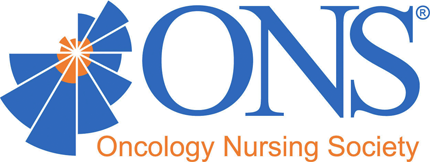Influence of the COVID-19 Pandemic on Clinical Oncology Nursing Care
Jump to a section
Exactly where are we in the practice of clinical oncology nursing, now indelibly altered by the COVID-19 pandemic? Depending on the day or hour, experts in clinical oncology care claim that clinical oncology practice has stabilized, with care now grounded by a solid foundation of what we know and what we can expect about variants of the SARS-CoV-2 virus. Others in the know are cautious with their perspectives and predictions, referring to unanticipated variants of the coronavirus and how and when those variants may affect how oncology patient care is delivered.
As I write this in July 2022, I know that clinical oncology nursing care has advanced, which is evident by new, enlightened, and resilient nurse competencies, either because of the COVID-19 pandemic or in spite of it (Valverde et al., 2022). To build a foundation for oncology nursing practice, clinical updates and patient case studies provide insights about how clinical oncology practice has changed because of the COVID-19 pandemic.
Contributing to that foundation for practice, this issue of the Clinical Journal of Oncology Nursing (CJON) highlights three pandemic-affected drivers of clinical oncology care: COVID-19 vaccines as a vital component of clinical oncology care; applications of digital health technologies that, in some cases, have changed how clinical oncology care is delivered; and ways that clinical oncology nurses and their colleagues have addressed the critical problem of interrupted or delayed care because of pandemic-related barriers.
Associated with immunosuppressed status from their disease or treatment, patients with cancer are considered a priority patient population for COVID-19 vaccination because of their vulnerability to infection and multiple risk factors for serious illness from the coronavirus (Fendler et al., 2022). This CJON issue provides an update about COVID-19 vaccines and how they are integrated into clinical oncology care; Cazeau et al. (2022) provide guidance on COVID-19 vaccination planning for immunosuppressed patients with cancer toward building a critical knowledge base for nurses.
Although digital technologies have been widely praised for increasing accessibility and patient convenience during the COVID-19 pandemic, many considerations remain to effectively implement those digital health technologies as a standard platform for clinical care (Arem et al., 2022). Therefore, “The COVID-19 Pandemic and Transition to Digital Health in Oncology Care” reviews digital health technologies in oncology care, technology-based changes in practice because of the pandemic, and the role of oncology nurses and nursing leaders to integrate digital health technology into clinical practice (Baldwin Medsker & Skwira-Brown, 2022).
Finally, this CJON issue includes a compilation of case studies from oncology nurses and their colleagues that illustrate how clinicians addressed pandemic-related delays in oncology care or revised clinical environments to better accommodate care delivery (Sweeney et al., 2022). Estimates from a 2021 systematic review of studies about pandemic-related delayed care (including routine activity of cancer services, surgeries, radiation therapy treatments, chemotherapy treatments, and follow-up outpatient visits) confirmed that delayed or disrupted care affected facilities (as much as 77.5%), the healthcare supply chain (as much as 79%), and personnel availability (as much as 60%) (Riera et al., 2021).
With this issue’s foundational articles about the COVID-19 pandemic’s sustaining influence on clinical oncology nursing care, oncology nurses can bring a pandemic-informed state of mind to practice, building new clinical competencies and implementing novel strategies to improve oncology care.
About the Author
Ellen Carr, PhD, RN, AOCN®, is the editor of the Clinical Journal of Oncology Nursing at the Oncology Nursing Society in Pittsburgh, PA. Carr can be reached at CJONEditor@ons.org.
References
Arem, H., Moses, J., Cisneros, C., Blondeau, B., Nekhlyudov, L., Killackey, M., & Pratt-Chapman, M.L. (2022). Cancer provider and survivor experiences with telehealth during the COVID-19 pandemic. JCO Oncology Practice, 18(4), e452–e461. https://doi.org/10.1200/OP.21.00401
Baldwin Medsker, A., & Skwira-Brown, A. (2022). The COVID-19 pandemic and transition to digital health in oncology care. Clinical Journal of Oncology Nursing, 26(4), 374–382. https://doi.org/10.1188/22.CJON.374-382
Cazeau, N., Palazzo, M., Savani, M., & Shroff, R.T. (2022). COVID vaccines and immunosuppressed patients with cancer: Critical considerations. Clinical Journal of Oncology Nursing, 26(4), 367–373. https://doi.org/10.1188/22.CJON.367-373
Fendler, A., de Vries, E.G.E., Guertsvankessel, C.H., Haanen, J.B., Wörmann, B., Turajlic, S., & von Lilienfeld-Toal, M. (2022). COVID-19 vaccines in patients with cancer: Immunogenicity, efficacy and safety. Nature Reviews. Clinical Oncology, 19(6), 385–401. https://doi.org/10.1038/s41571-022-00610-8
Riera, R., Bagattini, A.M., Pacheco, R.L., Pachito, D.V., Roitberg, F., & Ilbawi, A. (2021). Delays and disruptions in cancer health care due to COVID-19 pandemic: Systematic review. JCO Global Oncology, 7, 311–323. https://doi.org/10.1200/GO.20.00639
Sweeney, S., Fanslau, K.L., Ritchie, E., Raroha, T., Mitchell, A., Dodson, V., & Carr, E. (2022). Delayed oncology care related to the COVID-19 pandemic: Case studies. Clinical Journal of Oncology Nursing, 26(4), 383–390. https://doi.org/10.1188/22.CJON.383-390
Valverde, P.A., Kennedy Sheldon, L., Gentry, S., Dwyer, A.J., Ferrer, E.L.S., & Wightman, P.D. (2022). Flexibility, adaptation, and roles of patient navigators in oncology during COVID-19. Cancer, 128(Suppl. 13), 2610–2622. https://doi.org/10.1002/cncr.33962

